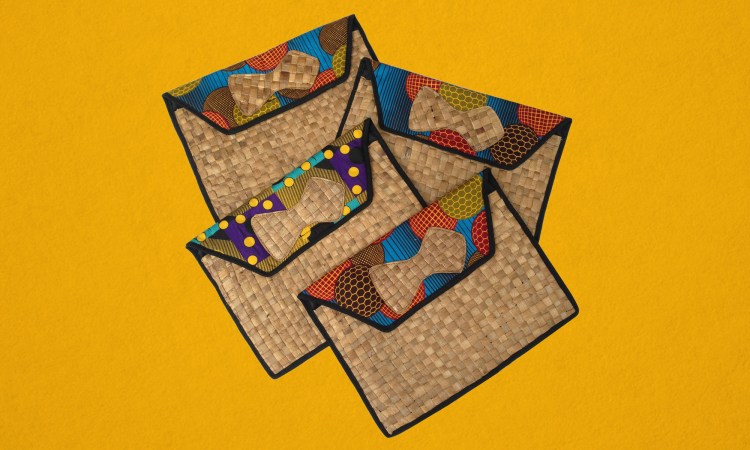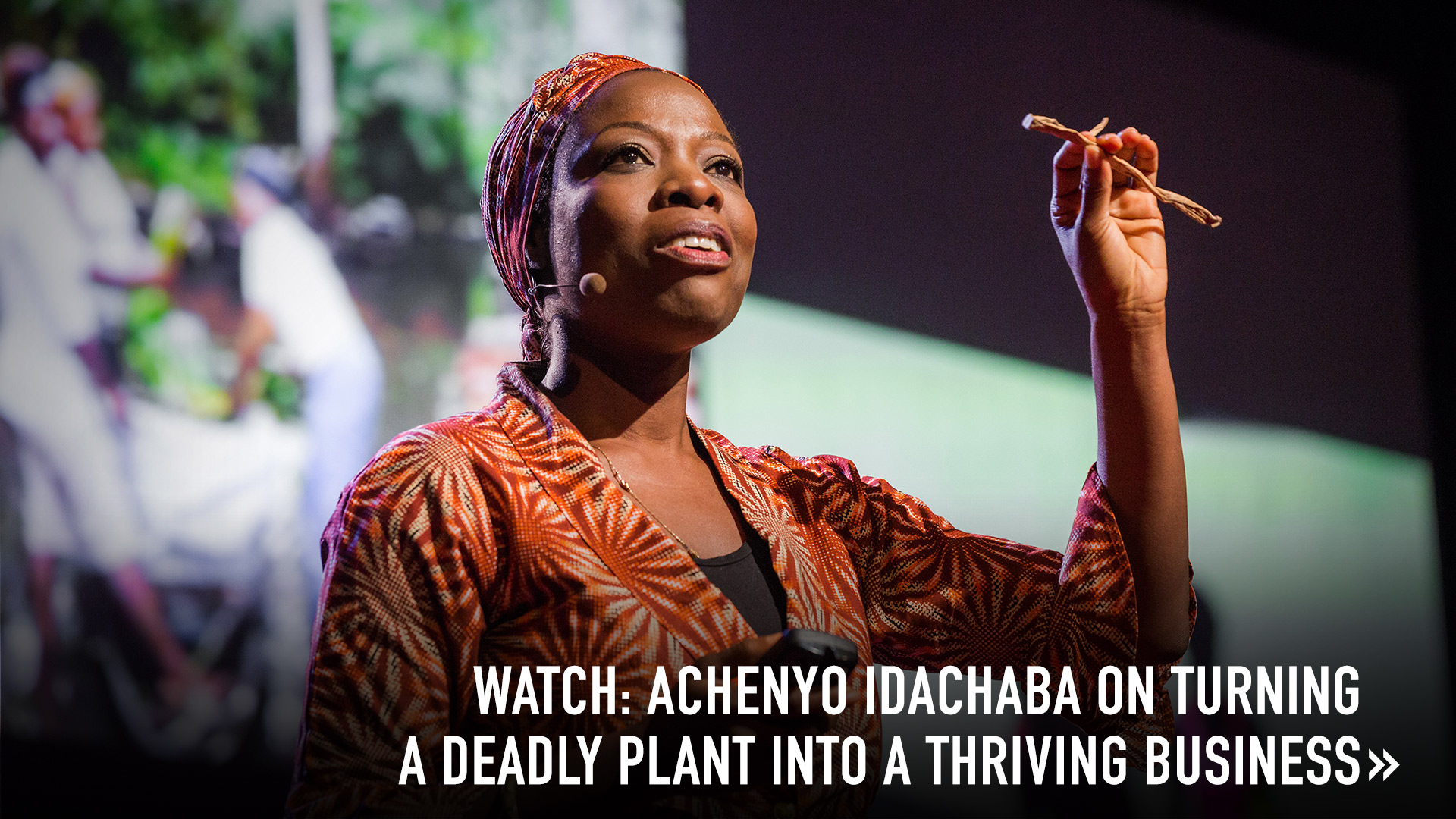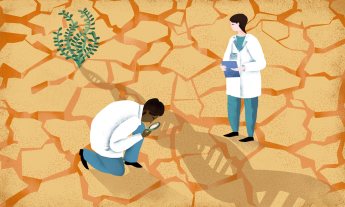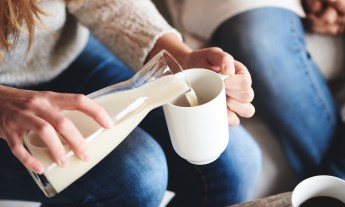
Beautiful water hyacinth was strangling the life out of waterside communities in Nigeria, but entrepreneur Achenyo Idachaba saw potential in the plague.
The water hyacinth is a flowering aquatic plant that is native to the Amazon River basin. When plant enthusiasts first encountered its tall, showy lavender blooms more than a century ago, they transplanted it into gardens all over the world and it spread from there. The nearly indestructible plant propagates like an alien creature out of a sci-fi film, and it’s become what some consider the world’s worst aquatic plant.
Water hyacinth is a noxious, invasive weed that is found in more than 50 countries, threatening natural ecosystems and people’s livelihoods. In Nigeria, it is referred to by names that point to its destructiveness and insidiousness — for example, in Igala, it’s called A Kp’iye Kp’oma, which translates to “death to mother and child,” and gbe’borun, a Yoruba phrase that translates roughly to “gossip” or “tale-bearer.”
In 2009, Achenyo Idachaba had recently moved to Lagos from the US when she was on the city’s Third Mainland Bridge one day and saw a group of fishing boats hemmed in by heavy mats of water hyacinth (TED Talk: How I turned a deadly plant into a thriving business). Today, she has helped turn this scourge into a source of employment for people in some of the communities it has harmed.
Water hyacinth can double in mass in less than two weeks. Making things worse, the freshwater plants link together as they grow: their waxy leaves form a dense blanket on the water’s surface and their roots tangle below in a thick web. As a result, they displace other plants and marine life, prevent the growth of phytoplankton, deplete the dissolved oxygen in the water, and degrade water quality — also hurting fish and other organisms.
The water hyacinth is devastating to humans, too. “Once it invades a lake or river, people who depend on the waterways for their livelihood are just shot,” says Idachaba. Fisherfolk, children who travel to school by boat, tourism, recreation and hydropower can all be harmed. What’s more, an overgrowth of hyacinth slows currents, leading the stagnant water to become a breeding ground for disease-carrying mosquitoes. The plant has also been linked to an increase in incidences of cholera. So how do you get rid of it? You can pull it by hand or with a machine, douse it with herbicides, or introduce native predators, but the plant frequently grows too fast (and its seeds are too tough) for these labor-, time- and money-intensive methods to make much of a dent. As a result, many people just wait for it to abate, which it sometimes does. In Nigeria, two occasions that can bring relief are the dry season and when saltwater from the Atlantic flows inland to freshwater bodies, killing the plants. But even so, the indefatigable weed usually resurfaces within a matter of months.
Could something so detestable be turned into stuff that people wanted? Idachaba wondered what, if anything, could be done with the plants. She did some research and found that people in Kenya and parts of Southeast Asia were creating baskets, bags and furniture from it. Could she learn to do the same, then teach these skills to people and help them sell their products? Together, perhaps they could turn the plague into profit. She headed to the Sabo community in Ibadan, a city in southwestern Nigeria, where she hoped she might find people who could help her weave the stems of the plants into rope. There, she met Malam Yahaya who, with the help of local kids acting as translators, taught her the skill.
Idachaba first perfected her rope-making abilities. Then she worked with rattan artisans from Ibadan and Lagos to use it to create items like baskets. In 2010, she started a company, MitiMeth, to sell hyacinth-based products (today it offers everything from coasters and lamps to rugs and iPad sleeves). She also began teaching the handicraft in Nigerian communities that have been harmed by the plant. She and her colleagues will typically go to the chief of a village, introduce themselves, describe what they’re doing and the benefits it could bring, and ask for a list of people who’d be interested in learning. The training — which shows participants how to make rope and a few products — lasts around a week. To date, Idachaba has helped teach more than 250 artisans.
The usual reaction of Nigerians when shown products made from water hyacinths: disbelief. The residents of Bayeku, a community in the southern part of the country, “never thought anything good could come out of the weed,” Idachaba says. “But we proved them wrong at the end of the training.” In fact, because there was so much enthusiasm, she ended up teaching 60 people. “We had kids climbing through the windows,” she laughs. “They’d gather up the scraps from the training afterwards and make things with it.” Idachaba has been particularly gratified by the generous impulse of trainees to share their skills with friends and neighbors. In 2015, she and her colleagues trained 33 women in Idah, a town in north central Nigeria. Later, when she began sourcing rope from them, she says, “I noticed that people who weren’t at the training were weaving.” She learned that two students from the original session had taught others. “They could easily have kept it to themselves,” she says, “but they didn’t look at it that way.”
After training, the artisans become workers that Idachaba’s company can contact as orders for products come in. MitiMeth sells goods through a variety of channels: at duty-free shops and other retail stores; and through local and international exhibitions, as well as e-commerce sites like Konga and etsy. Last year, they rang up more than NGN 7.5-million in sales. And 44 percent goes to the workers, who are also encouraged to find their own ways to sell their products.
Idachaba is extending training to reach different groups of people in need. In 2016, she was contacted by the Tolaram Foundation, which runs the ISHK Limb Centre, a nonprofit that provides free prosthetics to people in Lagos. “A number of the men and women they’ve given prosthetics to are indigent and unemployed,” she says. The terrain in parts of Nigeria can be tough to navigate, even for the able-bodied, and it’s especially rough for those with a disability to travel to remote jobs. People who know how to weave, however, could earn money while working at home. In late July, Idachaba conducted an initial training session with people from the Limb Centre. The participants were excited to learn, she says, and picked up the skills quickly.
Even as her company grows, Idachaba remains committed to her original purpose: turning water hyacinth into something that can help people rather than hurt them. She slowly sees this shift happening — and it’s reflected in the changing names for the plant. “It was gbe’borun, or ‘gossip,’ and now people call it olusotan, or ‘storyteller,’” she says. “And it’s gone from a kp’iye kp’oma, or ‘killer of mother and child,’ to ya du j’ewn w’Iye kp’oma, or ‘provider of food for mother and child.’”













